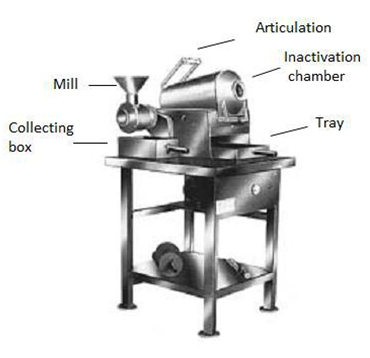Journal of
eISSN: 2473-0831


Mini Review Volume 7 Issue 4
Correspondence: José Roberto Delalibera Finzer, Chemical Engineering, Uberaba University, Campus Aeroporto, Av. Nenê Sabino 1801, Uberaba/MG. CEP 38.055-500, Brazil, Tel +55 34 3331.5854
Received: April 02, 2018 | Published: July 3, 2018
Citation: Finzer JRD, Valduga AT, Ferreira MMP, et al. Beverages of coffee tree leaves. J Anal Pharm Res. 2018;7(4):383-384. DOI: 10.15406/japlr.2018.07.00255
Background: The objective of this research was to analyze the use of coffee leaves that are residues from the production of coffee, for the preparation of beverages. A comparison is made with the processing of mate, a drink spread in the south of Brazil. Leaves of mate and coffee have had the enzymes inactivated following a drying. The dried leaves were used for beverage preparation. A sensorial analysis was performed using the nine-point hedonic scale to evaluate the flavor of the beverages. For the taste of the drink, the scores greater than or equal to 6 were around 80% for the beverage obtained from the coffee leaves, 49% for the black tea and 84% for the yerba mate. The highest percentage of grades was 7, consisting of 31.37% for coffee leaves, 19.61 for black tea and 27.45 for mate. The results make it possible to predict the possibility of using the leaves of coffee for a new beverage and to increase the income of coffee growers.
Keywords: leaves of coffee processing, new beverage, leaves drying, flavor beverage
The Canadian company Wize Monkey makes use of coffee leaves in non-productive fruit periods for the production of coffee leaf tea. There are consumers of the coffee leaf beverage on three continents. Coffee and Caméllia sinensis, are the two species most consumed and investigated around the world have functional effects, due to their secondary metabolites. The majority phytochemical components are methylxanthines, and phenolic compounds.1,2 The last group is very heterogeneous in chemical diversity, involving phenolic acids, chlorogenic acids, and flavonoids, who have proved antioxidant effect. The main biological action of methylxanthines is related with modifications in vigil status, in order to improve cognitive abilities.3
The main physiological effect of caffeine “trimethylxanthine” is the stimulant of the central nervous system. Caffeine has an effect on the cardiovascular system causing an increase in blood pressure. These effects are observed when the individual ingests a dose of 250mg of caffeine (one cup of coffee has on average 70mg of caffeine). However, this effect disappears after repeated ingestion of the same dose “three times a day for seven days”.4
The caffeine content found in the bark of the coffee fruits (1.30%) is close to that found in the grain, (1.12%),5 and the leaves are of the same order of magnitude (0.8 to 1, 9%), dry weigth.6 The aim of this work was to study the extraction of soluble in coffee leaves in specific processing steps: inactivation and drying and to evaluate the acceptance, in relation to flavor, of the beverage obtained from the processed leaves.
Initially, the coffee leaves should have the enzymatic complex inactivated (Figure 1) to avoid darkening and formation of substances with undesirable flavor.

Figure 1 Scheme of an enzymatic inactivator with mill.5
Figure 2 shows aspects of the leaves of coffee: a) in natura; b) inactivated and c) dried with the procedure used in this research. The appearance of dried leaves is attractive which is indicative of the quality of the drink. For comparison, drinks with traditional leaves were prepared: black tea and yerba mate, results in Figure 3.
The coffee leaf beverage was well appreciated by the tasters who carried out the sensory analysis, as shown in Figure 3. ANOVA for aroma analysis showed that at 0.05 significance levels, there was no difference between the tasters (p=0.31, p≥0.05), that is, there was agreement among the tasters acceptance of the aroma for all three types of drinks.
For the taste of the drink, the scores greater than or equal to 6 were around 80% for the beverage obtained from the coffee leaves, 49% for the black tea and 84% for the toasted yerba mate. The highest percentage of grades was 7, consisting of 31.37% for coffee leaves, 19.61 for black tea and 27.45 for mate. The results make it possible to predict the possibility of using the leaves of coffee for a new beverage and to increase the income of coffee growers. The leaves of mate with the initial humidity of 61.9% (wet basis), reduces to 14.6% (wb) after inactivation at temperature of 180oC, and after drying to 4.3% (wb).7,8 For coffee leaves processed with the same procedure, they had the final moisture of 5.0% (wb).
None.
Author declares that there is no conflict of interest.

©2018 Finzer, et al. This is an open access article distributed under the terms of the, which permits unrestricted use, distribution, and build upon your work non-commercially.